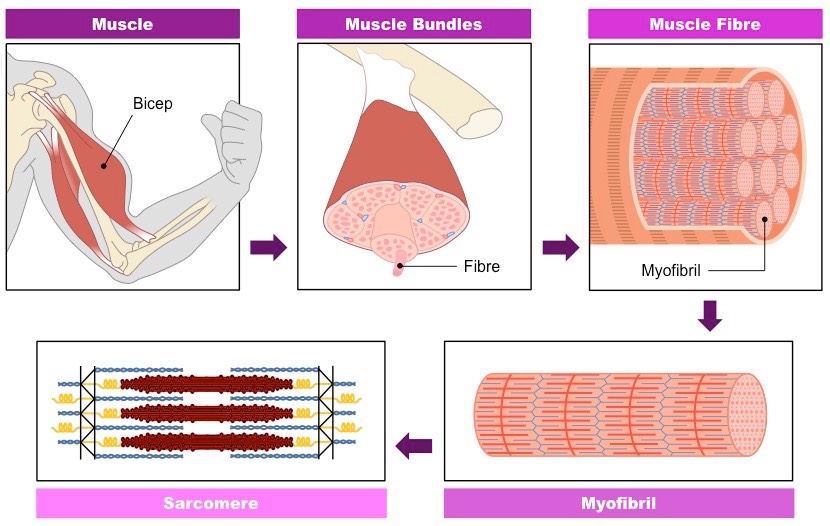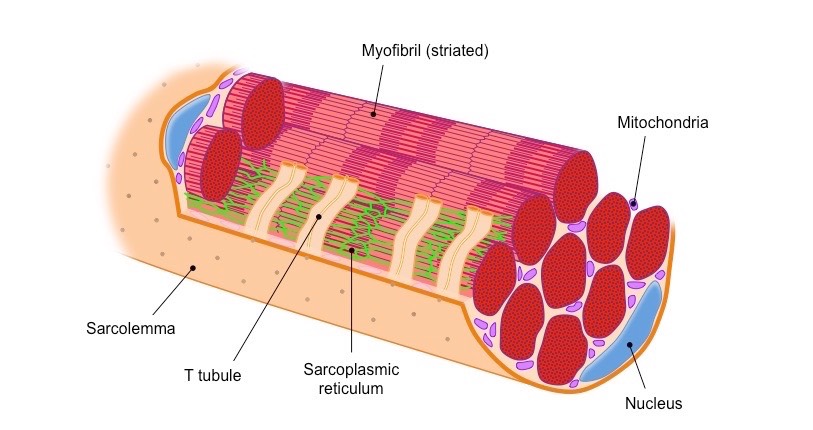![]()
Understanding:
• Skeletal muscle fibres are multinucleate and contain specialised endoplasmic reticulum
• Muscle fibres contain many myofibrils
Organisation of Skeletal Muscles
- Skeletal muscles consist of tightly packaged muscular bundles (fascicles) surrounded by connective tissue (perimysium)
- Each bundle contains multiple muscle fibres, which are formed when individual muscle cells fuse together
- Muscle fibres contain tubular myofibrils that run the length of the fibre and are responsible for muscular contraction
- The myofibrils can be divided into repeating sections called sarcomeres, each of which represent a single contractile unit
Structural Arrangement of Skeletal Muscles

Muscle Fibre Structure
Each individual muscle fibre has the following specialised features designed to facilitate muscle contraction:
- They are multinucleate (fibres form from the fusion of individual muscle cells and hence have many nuclei)
- They have a large number of mitochondria (muscle contraction requires ATP hydrolysis)
- They have a specialised endoplasmic reticulum (it is called the sarcoplasmic reticulum and stores calcium ions)
- They contain tubular myofibrils made up of two different myofilaments – thin filament (actin) and thick filament (myosin)
- The continuous membrane surrounding the muscle fibre is called the sarcolemma and contains invaginations called T tubules
Components of A Skeletal Muscle Fibre

Component: Labelled Nucleus Mitochondria Myofibril Sarcoplasmic Reticulum Sarcolemma
